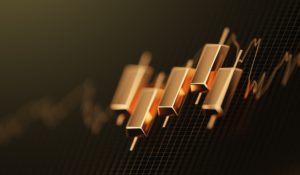Market Update 8th April 2024

Fool’s gold
My first job in financial services was as a graduate analyst at PwC in 2000, and the first thing I was asked to do was some work for the World Gold Council about whether there was any future for gold as an investment. I’m not sure how seriously everyone was taking it when they came and asked me.
Gold spent several years below $300/oz either side of 2000, the lowest it had been since 1979. This was the same time Gordon Brown was moonlighting as a gold trader, selling about half the UK’s gold reserves – around 395 metric tonnes. He got between $250 – $300 per ounce, across 17 auctions, which came to about $3.8bn in total. The gold price has recently been hitting all time highs and is $2,355 per ounce as I write. 395 tonnes would get you nearly $33bn today. Gordon has both an undergraduate degree and a PhD in history, and I believe this was his first and last foray into the gold market.
Why did Gordon seize the opportunity to call a generational bottom of the market with such enthusiasm? Partly because as with the World Gold Council commissioning work from PwC, there was an idea at the time that gold was finished as a useful asset – it had no place in the modern financial system. Partly – no laughing here please, we can all do it backwards – he thought government bonds offered better returns and this is where he reinvested the money.
Having said all this, gold is only at all time highs vs paper currencies all riddled with various problems. Another measure is the ratio of the S&P 500 to the gold price, or in other words the amount of gold you would need to buy the S&P 500.
US President Nixon ended the Bretton Woods agreement in 1971, meaning that the US dollar was no longer pegged to gold, as it had been since the end of the Second World War. At that time the ratio was 2.4 but then fell to just 0.17 in 1980 (meaning gold had strongly outperformed the S&P which was then cheap in gold terms), before rallying to its peak of 5.5 in August 2000 (meaning the opposite – you need a lot of much cheaper gold to buy the index, which was of course in a bubble). Perhaps counterintuitively the gold ratio is at about the same level vs the S&P as in 1971 – about 2.3, having risen steadily over the last decade.
The S&P being cheaper than in 2000 in gold terms, or any terms at all isn’t much of an achievement, but does suggest even the US, while not necessarily cheap, isn’t in a bubble as some people believe following its latest tech driven rise. Gold isn’t either. The S&P ratio is also slightly below its post-Covid peak.
Several other markets, such as US and Japanese equities have also been reaching all-time highs recently, despite high interest rates which are taking longer to come down than expected. But last Thursday the S&P 500 closed down over 2% from its recent all time high set at the end of the previous week. This is the first time this has happened since October which may be a sign we are retreating back into a risk off mode.
The other asset rising steadily all year is oil, which also spiked up further late last week following talks between the US and Israel. Energy is around 7% of US CPI and the high oil price is contributing to the stickiness of inflation, which is sending bond yields higher again. One country to watch is Iran. According to my friends at the World Gold Council, Iran is the sixth largest buyer of gold jewellery, bars and coins. They are also the third largest producer of oil in the world and the risk remains that they are drawn into the war in Palestine, with probable consequences for both markets.
In the longer term though, since 1971, gold has returned about 8.5% per year, only slightly behind US equities on 9.5%, and ahead of global equities, high yield bonds, US corporate bonds and US treasuries with a little over 3%. We see gold as an important asset class in portfolios. We hold both physical gold ETFs and gold mining funds.
A final alternative context for the gold price is the spread to the all-in sustainable cost of mining it. The latest number I have for this is around $1,300, meaning gold is trading at a spread of around $1,000, which is historically high, potentially suggesting upside in the miners.

Robert Fullerton – Senior Research Analyst
Hawksmoor Investment Management Limited is authorised and regulated by the Financial Conduct Authority (www.fca.org.uk) with its registered office at 2nd Floor Stratus House, Emperor Way, Exeter Business Park, Exeter, Devon EX1 3QS. This document does not constitute an offer or invitation to any person in respect of the securities or funds described, nor should its content be interpreted as investment or tax advice for which you should consult your independent financial adviser and or accountant. The information and opinions it contains have been compiled or arrived at from sources believed to be reliable at the time and are given in good faith, but no representation is made as to their accuracy, completeness or correctness. The editorial content is the personal opinion of Robert Fullerton. Other opinions expressed in this document, whether in general or both on the performance of individual securities and in a wider economic context, represent the views of Hawksmoor at the time of preparation and may be subject to change. Past performance is not a guide to future performance. The value of an investment and any income from it can fall as well as rise as a result of market and currency fluctuations. You may not get back the amount you originally invested. Currency exchange rates may affect the value of investments.
View more news
